It is probably safe to say that the current week (June 5-11, 2023) is shaping up to be one of the most significant of the entire Russo-Ukrainian War. On Monday, all eyes were on the Ukrainian Armed Forces and their much anticipated summer counteroffensive, which began with a series of battallion level attacks across the breadth of the theater. After these initial assaults in the Ugledar, Bakhmut, and Soledar sectors began to collapse with heavy losses, it looked like the topic of discussion for the forseeable future would be Ukraine’s prospects for breaching strongly held Russian defenses.
Instead, the entire Ukrainian offensive was overshadowed by the sudden and entirely unexpected failure of the dam at Nova Kakhovka on the lower Dneiper.
Let’s be clear about one thing: the destruction of this dam marks a qualitative change in the course of the war; a dam represents an entirely different tier of target. There is a broad sense that dams are not legitimate military targets, as they fall in the category of “objects containing dangerous forces”, along with things like sea walls, dykes, and nuclear power plants. However, attacks on dams are not without precedent, and the legality of such attacks is a complicated and thorny topic - it is not so simple as to say “attacking dams is a war crime” in all circumstances.
In any case, the legalities are not the main point here. The destruction of dams has the potential to impact civilians on a scale which is an order of magnitude higher than anything which has yet occured. The reality of the war in Ukraine is that, due to the fact that most of the fighting is occuring in depopulated areas (along with Russia’s use of precision standoff weapons) civilian casualties have been mercifully low. Through May of this year, there were fewer than 9,000 recorded civilian deaths in Ukraine (including both Ukrainian and Russian controlled territories). This is a thankfully low number, compared (for example) to the war in Syria, where over 30,000 civilians are killed annually, or Iraq, where nearly 18,000 civilians died per year in the years following the American invasion in 2003.
A breaking dam, however, massively escalates the threat to civilians. Tens of thousands of civilians are in the flood path and have to be evacuated - but perhaps even more significantly, the destruction of the dam creates a major threat to agriculture. There are also rising escalation risks, and the last thing anybody wants is for dams to become a permanent menu item.
In this article, I want to conduct a preliminary assessment of the destruction of the dam, its consequences, and its potential causes. In particular, I want to sort through the evidence and get a sense of whether Ukraine or Russia is a more likely culprit. As it currently stands, the situation is in flux and it is not as if we will find either Zelensky’s or Putin’s fingerprints on the detonator, but we can at least put some puzzle pieces roughly into position and get a sense of what the picture looks like.
One thing that I want to mention, first off, is that we do not need to assume that the dam was intentionally destroyed. For example, in a now infamous Washington Post article, we learn that Ukraine experimenting with hitting the dam with GMLRS rockets in an attempt to blow a hole and create a controlled flood. The sense that one gets here is that Ukraine did not necessarily intend to destroy the dam altogether, but rather that they wanted to create a limited breach and by extension a limited flood.
We will keep such possibilities in mind and consider them to be a distinction without difference. It’s entirely possible that one party or the other attempted to create a limited breach and accidentally brought about a much larger dam failure, but from our perspective this isn’t particularly different from intentionally bringing the whole thing down.
With this little distinction in mind, let’s begin to sort through what we know about this whole dam thing.
Water World
What on earth is (or was) the Kakhovka dam and what was its relation to the larger geography of the surrounding steppe?
To begin with, let’s make a brief note about the Dnieper. In its natural state, the Dnieper is a deeply difficult and turbulent river, characterized by a series of essentially unnavigable rapids. In fact, the Dnieper’s fiesty nature is precisely why the city of Kiev is where it is. 1200 years ago, when enterprising traders came rowing down the Dnieper (trying to get to the Black Sea, and thence to Constantinople), they found that certain portions of the river were impassable, and it was necessary to “portage” their boats - which means dragging them out of the river and overland to get past the rapids.
Portaging a boat on the middle Dnieper in 800 AD was dangerous. While disembarked and laboriously dragging the boat downstream, a trading party would be highly vulnerable to attack by the various warlike tribes which inhabited the region at the time. So it became necessary to build some sort of outpost stronghold which could serve as a waypoint to make passage down the river at least acceptably safe. Hence, Kiev - buit originally as a timber fortified trading post to ease passage along the middle Dnieper.
This is perhaps interesting, but as an aside it illustrates the basic point that for most of human history the Dnieper was not a friendly or easily navigable river akin to the Mississippi or the Rhine, and in the Soviet era a major effort was undertaken at last to tame it, in the form of a series of hydroelectric dams. These dams stiffled the rapids, generated electricity, smoothed the river’s course, and created enormous resevoirs, of which the Kakhovka resevoir is the largest by volume.
The creation of the Kakhovka resevoir was also vitally linked to a series of canals which are fed from the resevoir. The most important of these is the Crimean canal, which carries Dnieper water to Crimea, but there are also a series of irrigation works which are vital to agricutlure in Kherson and Zaporizhia oblasts.
So that is the basic structure of the region’s hydrology. We can therefore enumerate both upstream and downstream effects from the dam’s breaching. Upstream effects relate to the draining of the Kakhovka resevoir, which will in time lead to insufficient flow through the canals, depriving both Crimea and regional farmland of water. Downstream effects are those of the enormous flooding which is currently taking place.
A threat to the Kakhovka dam first entered the discourse last autumn, when General Surovikin made the stunning decision to withdraw Russian forces from west bank Kherson - a decision which he said was prompted by the fear that Ukraine might destroy the dam and create a flood which would trap Russian troops on the far shore. That decision certainly looks prescient now, but thanks to this earlier discussion there was already a bevy of analysis conducted predicting what the flood path might look like.
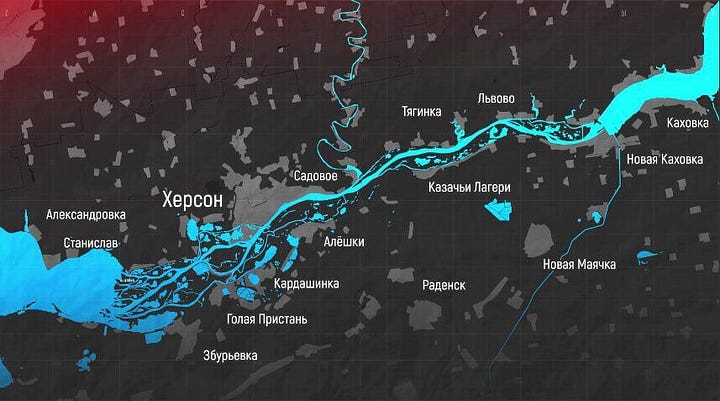
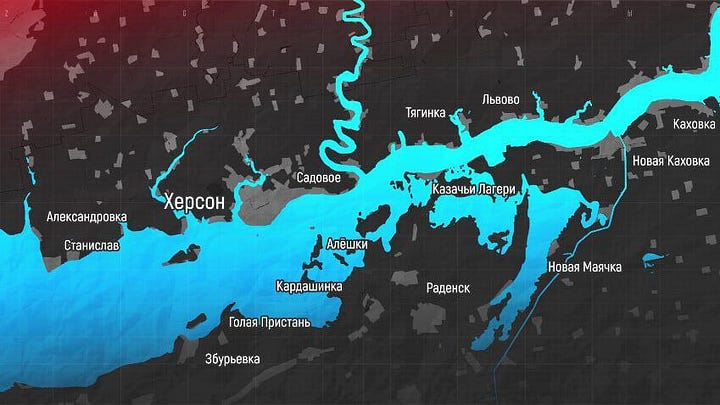
As per the latest information as of this writing, the river has not yet crested and water levels continue to rise, but this has already turned into a vast and extremely disruptive flood. This is a severe humanitarian and ecological disaster with implications for the military situation in Ukraine. The question is - who did it?
Incriminating Evidence
Let’s start by looking at the most direct evidence potentially implicating Russia or Ukraine. I’d like to start by looking at an allegedly damning (haha) video which has been circulating rapidly, which purports to confirm that Russia blew the dam.
The video in question allegedly shows a Russian soldier giving an interview in December in which he boasts that the Russian army mined the Kakhovka dam and plan to destroy it to create a cascading flood and wash away the Ukrainian troops downstream.
Not to be blunt, but this is an egregiously bad bit of trickery and it’s difficult to believe that people are falling for it. To begin with, this is an interview with a Ukrainian blogger and youtuber who goes by the screen name “Edgar Myrotvorets” - interestingly naming himself after the infamous Ukrainian kill list. The “Russian soldier” who he is interviewing is allegedly a gentleman named Yegor Guzenko. Yegor seems to be an interesting fellow - he pops up on social media periodically largely to confess to stereotyped Russian war crimes, like kidnapping civilians and executing Ukrainian prisoners, and of course blowing up dams.
Essentially, we are being asked to believe that there is a Russian soldier out there who is giving interviews to Ukrainian media in which he confesses to all of Russia’s nefarious activities, and then goes about his duties without being stopped or punished. It should be pretty obvious that Yegor is actually Yehor, and is not a Russian soldier at all but a Ukrainian impersonator - funnily enough, Yegor also has a beard even though the Russian MOD has been cracking down on facial hair.
In any case, Yegor’s explosive interview is the main piece of direct evidence which is being used to prove that Russia blew up the dam.
In contrast, the evidence implicating Ukraine is pretty straightforward: they openly talked about experimenting with ways to breach the dam, and have actively shot rockets and artillery shells at it in the past. We refer back to the infamous WaPo article, and in particular the key passage:
Kovalchuk [commander of Ukrainian Operative Commandment South] considered flooding the river. The Ukrainians, he said, even conducted a test strike with a HIMARS launcher on one of the floodgates at the Nova Kakhovka dam, making three holes in the metal to see if the Dnieper’s water could be raised enough to stymie Russian crossings but not flood nearby villages.
The test was a success, Kovalchuk said, but the step remained a last resort. He held off.
We even have footage of Ukraine striking the dam (particularly the roadway on top of it) from last year - footage which was incorrectly shared this week as being video of the strike that destroyed the dam on monday.
There is also a variety of circumstantial evidence worth sorting through.
A popular point being raised by the Ukrainian infosphere is the fact that the Kakhovka dam was under Russian control - therefore, they argue that only Russia could have planted explosives to create a breach (at this point, we do not know the precise technical method used to create the breach).
I rather think that Russia’s control of the dam makes it much less likely that they are responsible, for the following basic reason. First, having control over the dam’s gates means that Russia had the power to manipulate water levels downstream at will. If they wanted to create flooding, they could have simply opened all the gates. With the dam now breached, they have lost this control.
The situation is very much akin to the destruction of the Nordstream pipeline (which now seems to be being blamed on Ukraine, rather predictibly). Both Nordstream and the Kakhovka dam were tools that Russia had the power to swing in one direction or the other. These were levers that Russia could move from on to off and back again. The destruction of these tools actually robs Russia of control, and in both cases we are asked to believe that Russia intentionally disabled its own levers.
Cui Bono?
Ultimately, any analysis would be incomplete without asking a very basic question: who benefits from the destruction of the dam? This is where it gets a bit complicated, largely because there are so many concerns at cross-currents to each other. Let’s enumerate a few.
First, the flooding disproportionately affects the Russian side of the river. This has been pretty thoroughly established. The eastern bank of the river is lower and thus more affected by flooding. We knew this in the academic sense, and now satellite imagery confirms that it is indeed the east bank that has suffered most of the flooding.
This has had the effect of washing out prepared Russian defenses, including minefields, and forcing withdrawls out of the flood zone, with plenty of imagery coming in of Russian soldiers standing in water up to their waists.
Secondly, the Upstream effects disroportionately affect Russia as well. Remember, the implications of the dam breach are not just downstream flooding, but also the draining of the resevoir, and this is particularly bad for Russia. First, in the long run this endangers the water flow through the Crimean Canal, which undermines a key Russian war aim. One of Russia’s primary motivations for launching this war in the first place was precisely to secure the Crimean Canal, which Ukraine had dammed up in order to choke off the peninsula’s water supply. Any analysis of the issue needs to aknowledge that, if you believe Russia blew the dam, you are essentially saying that they voluntarily trashed one of their primary war aims.
But it’s not just the Crimean Canal - there are also the variety of irrigation canal networks which sustain agriculture in east-bank Kherson and Zaporizhia oblasts - oblasts which Russia has annexed and which are firmly under Russian control.
The only way to spin all this (and there are some people, like Peter Zeihan, trying to spin it this way) as being in Russian interests is to argue that Russia expects to lose control of all this territory (including Crimea) and is going scorched earth in anticipation of defeat. But to believe this, you need to believe that Russia is badly losing the war and is on the verge of total defeat, and if you believe this I have nothing to say to you except to direct you to this link.
Third, we need to note the effects that this will have on a potential amphibious operation. In the short term, this obviously turns the lower Dneiper into a dangerous morass, and as the water subsides it will leave plenty of mess and mud which will make a river crossing very difficult for several weeks. In the long run, however, crossing the river may actually be easier - and here is where I want to make what I think is a critical point.
As long as Russia had control of the Kakhovka dam, they had the power to create flooding downstream at will. The optimal time to do this would be while Ukraine was attempting an amphibious assault out of Kherson. If you created flooding during such an assault, you would be complicating the crossing and washing out Ukraine’s beachheads. Obviously, Russia has now lost the ability to do this.
We already know that Russia understands how and why to manipulate the water levels to its advantage. Earlier this year, they were actually keeping the Kakhovka resevoir levels extremely low, most likely to minimize the threat of Ukraine breaching the dam (as Surovikin was apparently quite worried about). However, in recent weeks they closed up the gates and filled the resevoir up to the top.
Why would they do this? It seems likely that Russia would want to retain water so that they could create a surge (not by destroying the dam, but by opening the gates up) to disrupt any Ukrainian attempt to cross the river. Again, the appeal of the dam for Russia is that it is a lever which can be throttled up and down as the situation calls for it. The breach of the dam, however, robs them of this tool.
This brings us to the corollary point, which is that the breach has two major benefits for Ukraine. Not only is it washing out Russian defenses and disproportionately disrupting the Russian side of the river, but Russia has now lost the ability to create a flood at the opportune moment later on.
If I had to make my guess about what happened to the dam, it would be as follows:
I believe Russia was retaining water to maintain the power to create flooding in the event of a Ukrainian amphibious assault across the lower Dnieper. Ukraine attempted to nullify this tool with a limited breach of the dam (of the sort which they rehearsed last December) but the dam failure cascaded beyond what they intended due to A) the resevoir being at extremely high levels, putting excessive stress on the strucure, and B) previous damage to the structure from prior Ukrainian shelling and rocketry attacks. Indeed, images of the dam seem to suggest that it failed in stages, with a single span leaking before the collapse metastasized.
I find the idea that Russia destroyed the dam to be very difficult to believe, for the following reasons (in recap):
Flooding disproportionately affected the Russian side of the river and destroyed Russian positions.
The loss of the dam does severe damage to core Russian interests, including Crimean water access and agriculture on the steppe.
The dam, while intact, was a tool which Russia was using to manipulate the water level freely.
Of the two beligerent parties, only Ukraine has openly shot at the dam and talked about breaching it.
We may learn, of course, that there was some accidental failure of some kind, potentially due to the water tug of war being waged between Russia and Ukraine as they try to balance the flow of the river. But in a wartime situation, when a major infrastructure object is destroyed, it is most rational to assume intentional destruction, and in this situation the costs to critical Russian infrastructure and the loss of a valuable tool for controlling the river make it extremely difficult to believe that Russia would blow up its own dam.
Ultimately, perhaps your judgement on the matter simply reflects your larger belief about who is winning the war. Breaching a dam is, after all, rather a desperation move - so maybe the question to ask is: who do you think is more desperate? Whose back is against the wall here - Russia, or Ukraine?



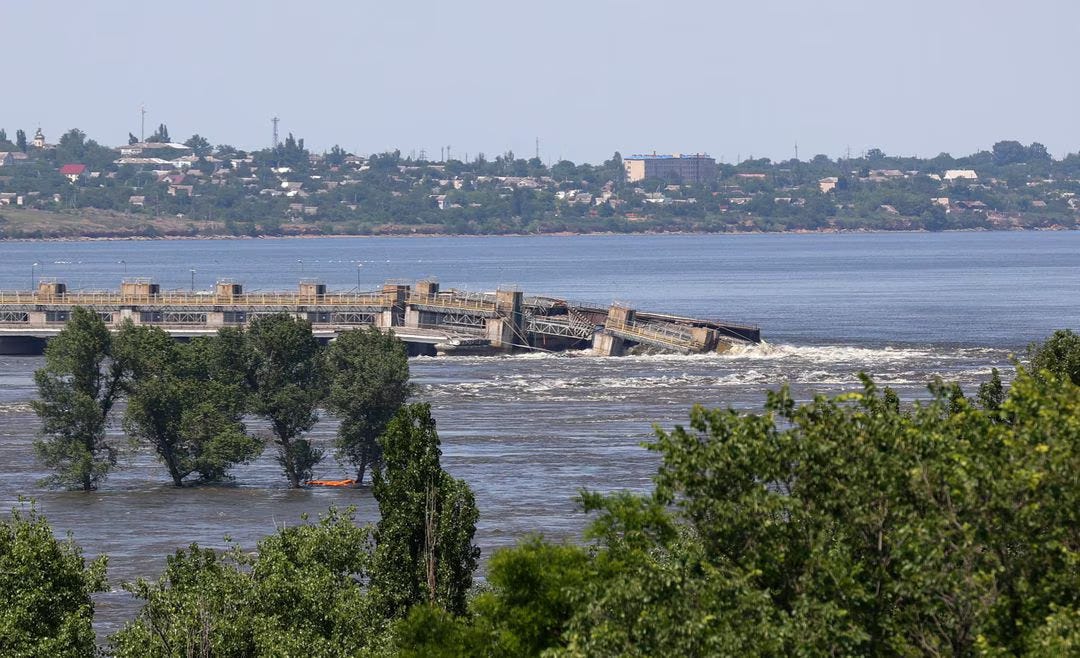
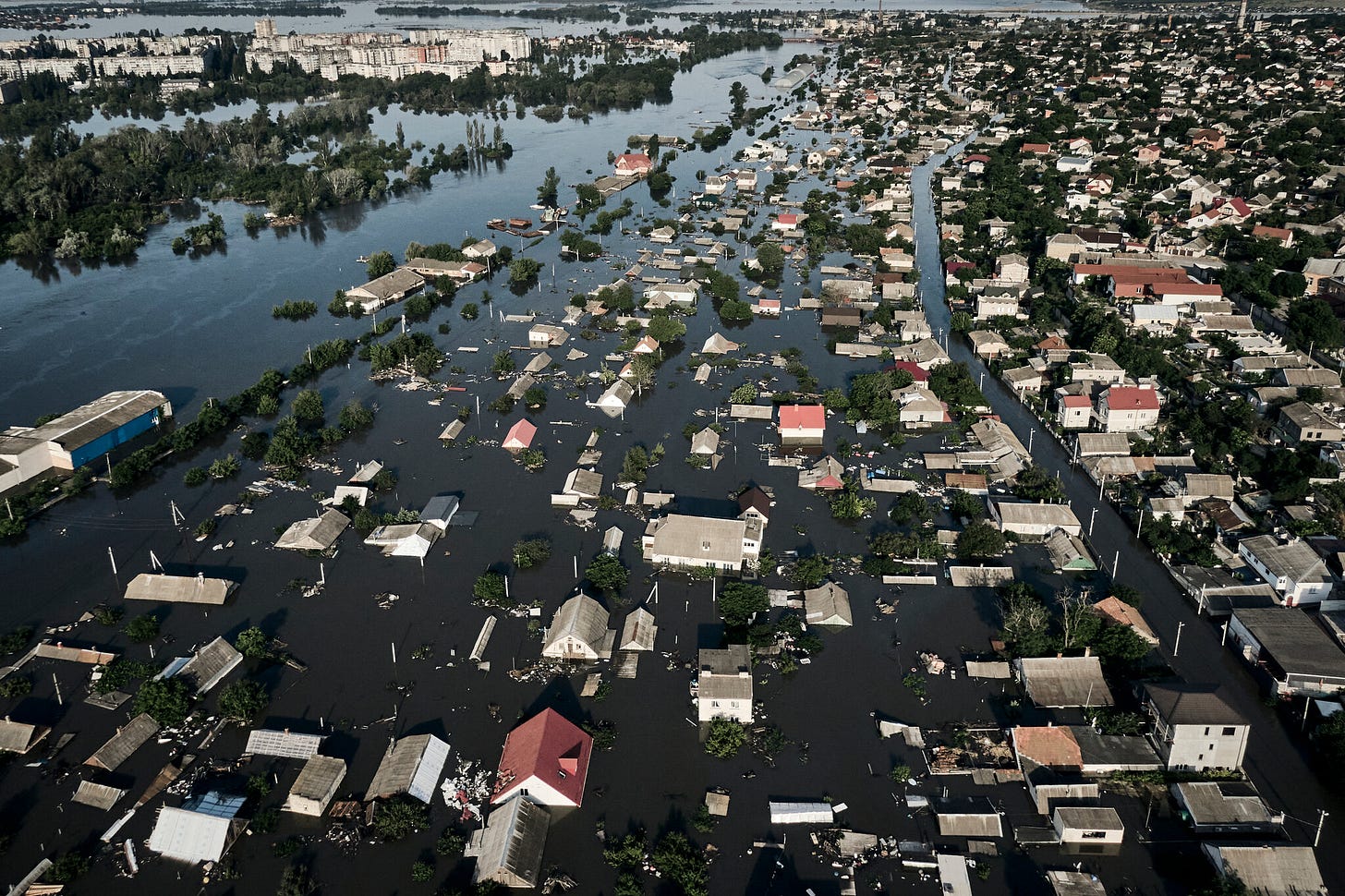

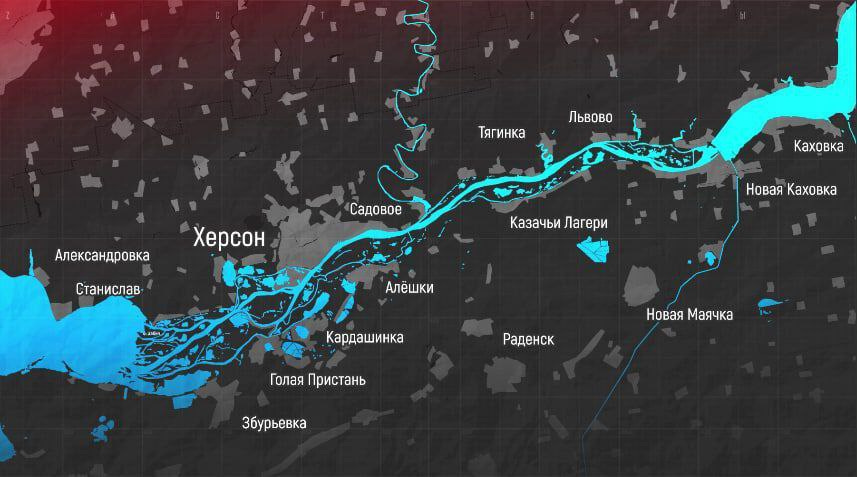

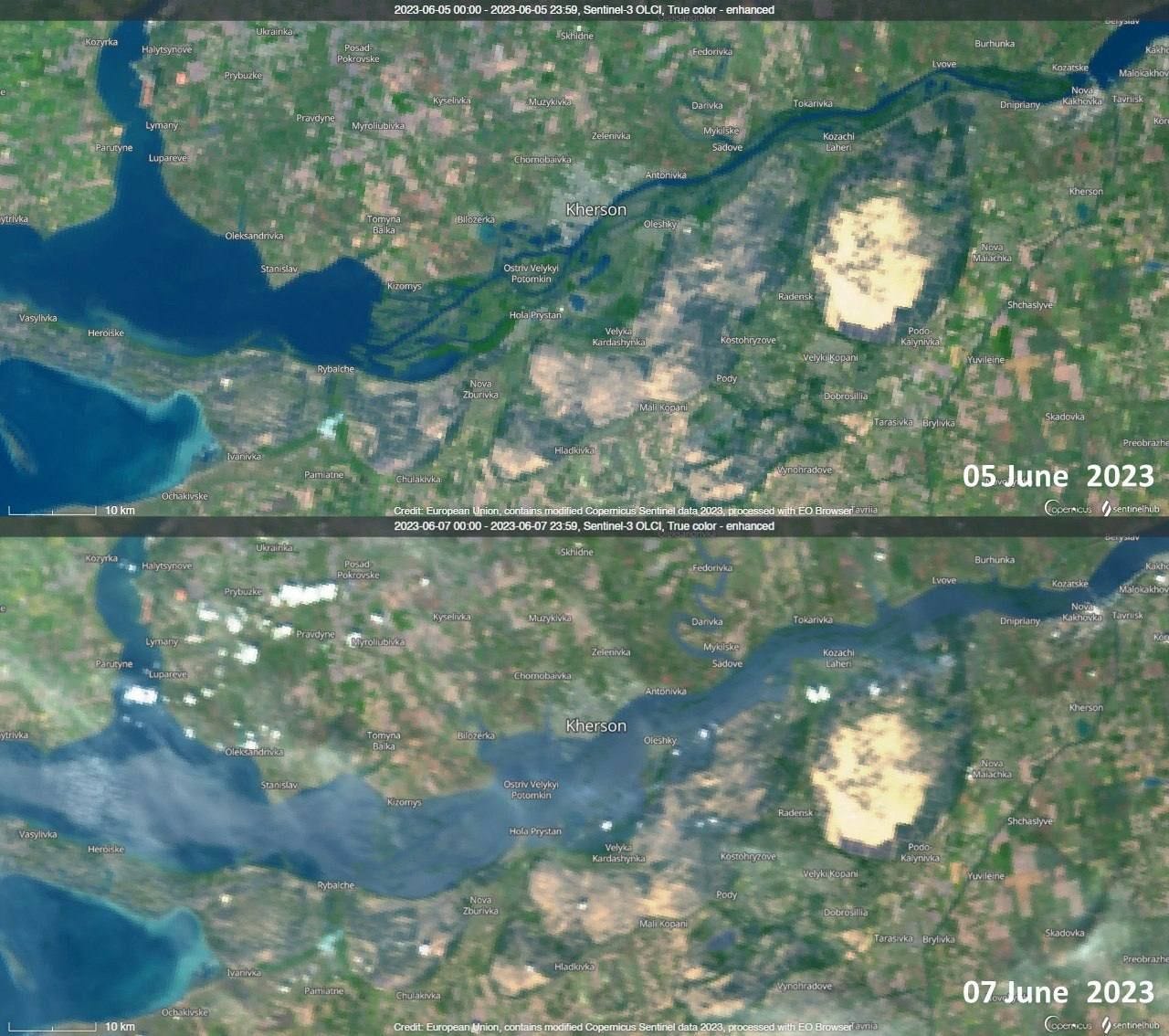
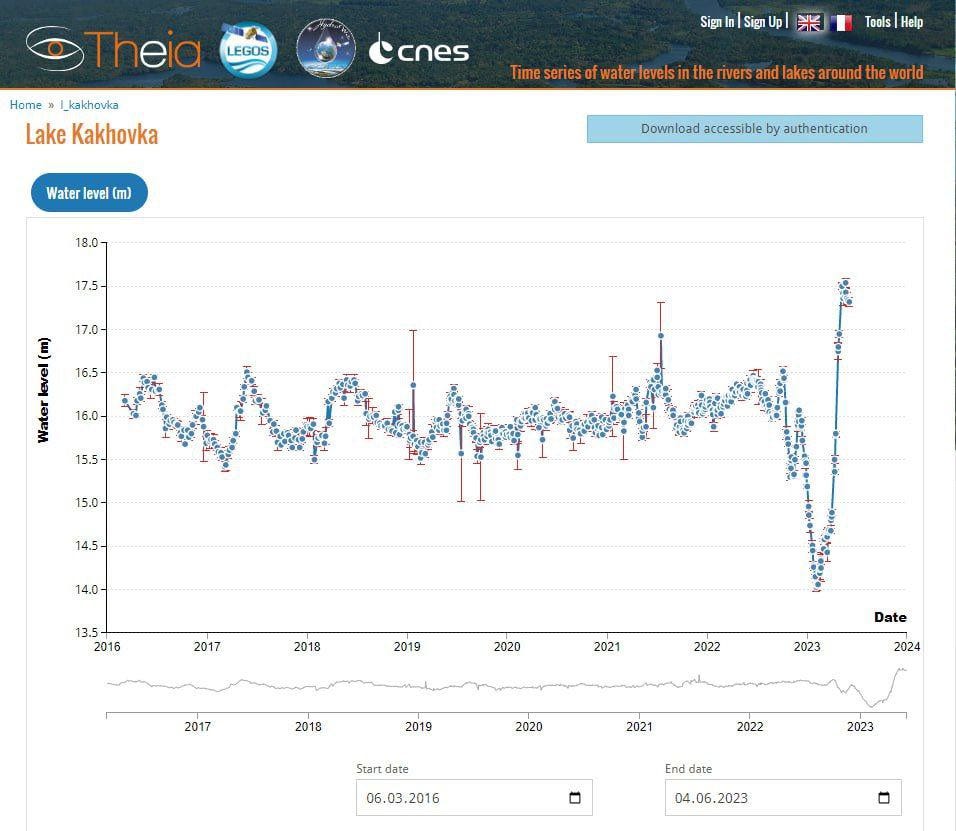

Russia has been working for years to build the Crimea. It has rebuilt cities and developed farming. The people there have wanted Russia affiliation, not Ukraine. Russia has been doing much in the war torn territories to rebuild and make life tolerable for Russian speaking Ukrainians, now fully Russian. They also have military/navel bases in the Crimea. It makes absolutely no sense that Russia would do this. They have also been rebuilding Mariupol and Donetsk, which Ukraine tried this past week to invade again with tanks and 300 troops that Russia destroyed. I hope Russia tears Ukraine apart, shred it to pieces and bring this war to an end... end the Nazi and the Khazarian Mafia, end the human trafficking, end the laundering of US dollars, end the bioweapons labs. The sooner the better.
Having admitted that it could only have been the Ukraine that had blown up the dam (even if it may have been done with the help of some twisted Western service - British, of course), I had come to the same conclusion as you: the Ukrainians and their allies are completely losing it, especially as they've also just blown up an ammonia pipeline. With their counter-offensive finally getting off the ground, they're taking one "desperate" action after another. Will they go so far as to blow up the Zaporizhia nuclear power plant? Or is there someone in Washington not intoxicated enough by the lies of his own camp to blow the whistle on the bullshit?
Frankly, I think the world situation is becoming extremely critical. It's a good thing President Putin is calm and not senile like Biden or temperamental like the American president's entourage. But it's to be feared that his patience has limits, and will eventually reach them.